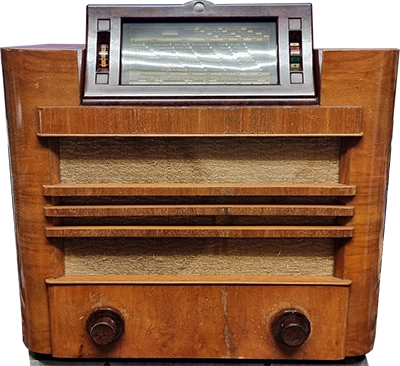
The story of the Philips 695A Rondo. It all started with this demolition chassis. Sometimes you need some parts.

The chassis in the cabinet was missing the output transformer. The wiring was completely cut to pieces. The speaker and dial cover were missing.

The electrolytic capacitors were already leaking a bit and I was just in time to restore these capacitors. Otherwise the chassis would have suffered permanent damage.

And it turns out that the chassis is playing. All capacitors are so leaky that the only thing you can do is replace everything. The wave range switch is so bad that you can hear cracking and grinding in the sound. And time will tell whether that can be achieved.

We start by disassembling the wave range switch. We will immediately replace the defective tar capacitors. We only use original parts.

We take detailed photos so that we know how things are assembled. This was once put together in the factory. The ash scrapes through the tar capacitor.

This is a switch deck of the wave range switch. This was a new model in 1936 and also the worst link deck they made.

Here I am removing the last deck of the wave range switch. It is a major job, but it is certainly doable.

Here you can clearly see that once the plate that holds the wave range switches is removed, you get a lot of space to disassemble things.

This is where the reconstruction started. The order in which the wave range switch is replaced is very important.

And when everything is put back it will look something like this. Then a question immediately arises. Could the chassis still play?

And then things go wrong. This tar capacitor was so stuck that it was impossible to get it out. A shielded wire runs underneath this tar capacitor. Because it is cut in half at the top, this wire must be replaced. This wasn't actually possible but I had no choice.

The cathode electrolytic capacitor of the power tube had to be removed. So just replace it with a new electrolytic capacitor.

And now replace the tar capacitor that was so stuck. It's quite a precision job, but it's going well.

This radio has a variable bandwidth that is controlled in the first mf transformer. This is the complete stroke that the transformer can make.










































